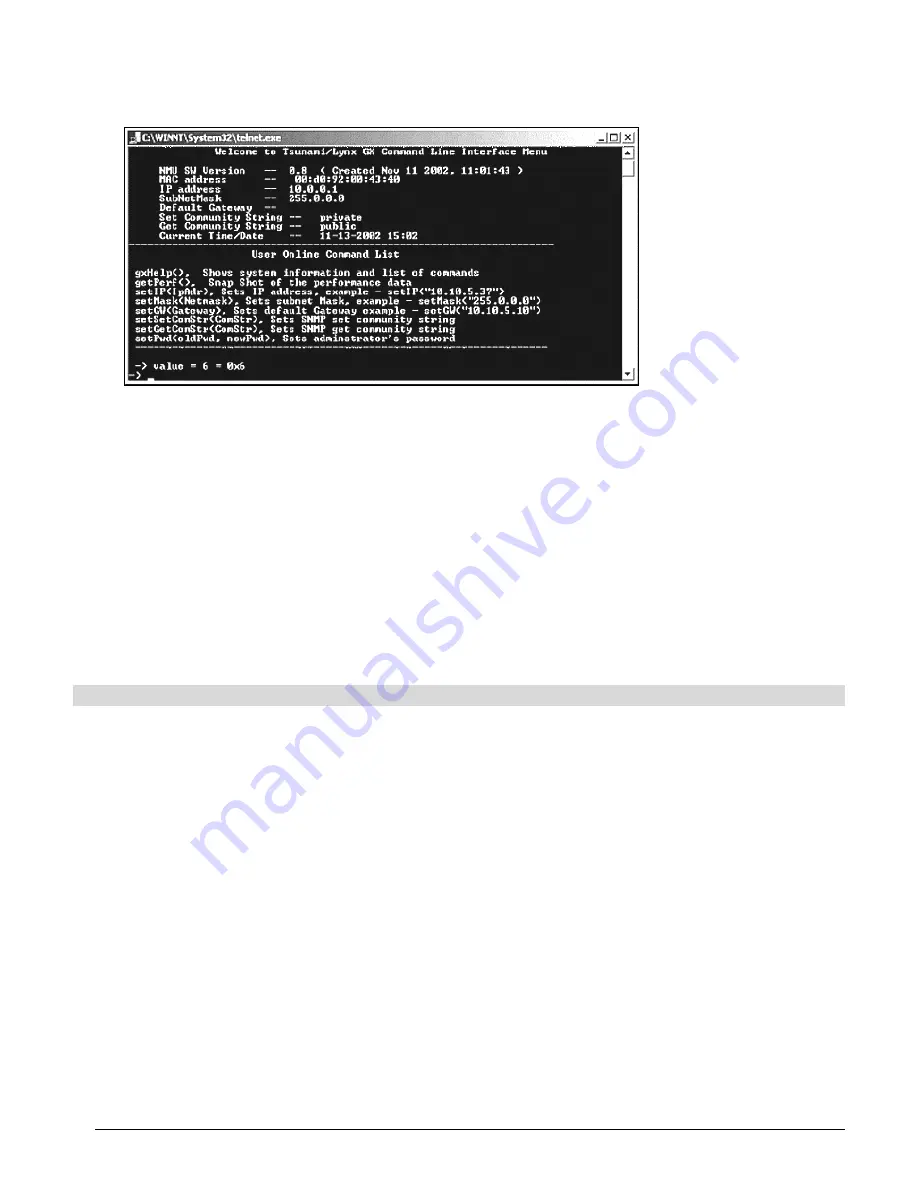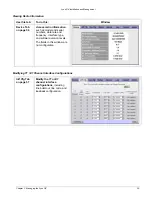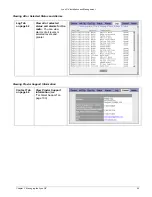
Lynx.GX Installation and Management
5. Enter
gxHelp
to view available commands, as shown in the following figure:
To end a Telnet session use the
logout
command. A config port session is unavailable until any telnet session
has ended.
CLI Commands
These are the CLI commands you can use:
gxHelp
............................................... Shows system information and list of commands.
getPerf
............................................. Snapshot of the performance data.
setIP(“IpAdr”)
.............................. Sets IP address; example: setIP (“10.10.5.37”)
setMask (“Netmask”)
................... Sets subnet mask; example: setMask (”255.0.0.0”)
setGW (“Gateway”)
........................ Set to default gateway; example: setGW(”10.10.5.10”)
setSetComStr (“ComStr”)
........... Sets SNMP set community string
setGetComStr (“ComStr”)
........... Sets SNMP get community string
SetPwd (“oldPwd”, “newPwd”)
.. Sets administrator’s password
MAINTAINING THE RADIO
The radio does not require any regular maintenance. However, it is prudent to monitor the radio link at regular
intervals to ensure that the link conditions are not changing. When visiting a radio site for maintenance, you
should check the following items and record the results:
▪
RSL voltage
▪
Power setting (NMS)
▪
Far-end RSL voltage
▪
Alarm conditions
Be sure to verify that the unit has adequate ventilation.
If any alarm conditions exist, record them. See “Troubleshooting Alarms” on page 95.
Proxim recommends you review the radio’s
Log
and
Status
pages to view whatever alarms and changes in
performance have occurred since the last maintenance interval. Download the log or perform a ‘print screen’
with your computer to keep a record of the performance for your maintenance records.
Proxim also recommends that the antenna system be inspected annually. This inspection should include
inspection of mounting hardware for tightness and corrosion, condition of the weatherseal on all RF
connections, and integrity of ground connections on cable and surge suppressor.
Chapter 3. Managing the Lynx.GX
45
































